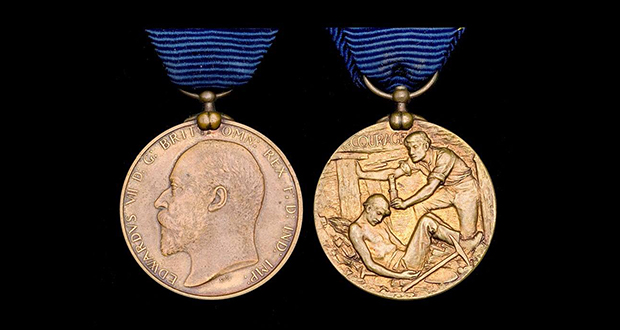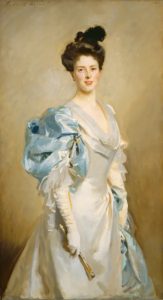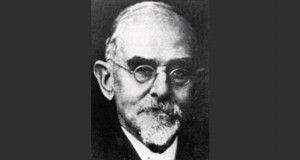UPDATED: 30/01/2024
30 January 1884, Arthur E Caldecott awarded the Chancellor’s Gold Medal.
30 January 1903, Mrs Joseph Chamberlain (Mary Crowninshield Endicott, daughter of the US Secretary of War) lays the foundation stone of the Women’s Hostel in Lennox Street.
30 January 1909, Twelve miners – six black and six white – awarded the Edward Medal for bravery in a Kimberley Mine disaster.
THE CHANCELLOR’S GOLD MEDAL
It was announced on 30 January 1884 that Arthur Edward Caldecott had been awarded the University of the Cape of Good Hope Chancellor’s Medal for 1883.
Arthur, who appears to be known as Alfred in Kimberley records, was the son of Dr Charles Henry and Martha Caldecott and was born on 31 May 1859. He was one of thirteen children born to the union.
The first and second Chancellors of the University offered for competition a Gold Medal that would be awarded to the writer of the best English essay on a subject proposed by the Council. The competition was restricted to graduates by examination, matriculated students and holders of certificates in literature or science, or in law and jurisprudence.
The subject selected for the Prize Essay in 1883 was “The Government and Civilisation of the Native Races in South Africa.”
Caldecott had matriculated in 1878 and passed the Law Certificate Examination in 1881.
The examiners for the Prize essay were Reverend Professor H.M. Foot BA LLB and Richard Bright, a former Under Secretary for Native Affairs and from January 1881 the Civil Commissioner and Resident Magistrate of Stellenbosch.
It is believed that Arthur (Alfred) died in Salisbury Mashonaland in May 1894 and was married to Ella (nee Drake). They had one child, Selby Drake Caldecott.
30 January 1903, Mrs Joseph Chamberlain (Mary Crowninshield Endicott, daughter of the US Secretary of War) lays the foundation stone of the Women’s Hostel in Lennox Street.
30 January 1909, Twelve miners – six black and six white – awarded the Edward Medal for bravery in a Kimberley Mine disaster.
Pictured are Mrs Chamberlain and the Edward Medal.
DID YOU KNOW
On Saturday 30 January, 1909, a mud rush occurred in the Kimberley Mine, causing six African miners to be completely cut off by 65 feet of mud. An attempt was made to clear the mud away but a second rush took place, and it was decided that the only possible method of reaching the men was by working over the top of the mud and handing the mud back in small quantities. The men concerned, after most arduous labour — they could only work stretched on planks — succeeded in rescuing the miners who had been entombed for forty hours. There was great risk of a further rush, which would have overwhelmed the workers.
On 7 July 1909 His Majesty the King, Edward VII, awarded the Edward Medal to 12 miners employed by De Beers Consolidated Mines in Kimberley.
The miners, with their job titles, were:
Aaron, Mine Boy
Barnes, James Brack, Miner
Blakemore, Arthur Torr, Miner
Coco, Mine Boy
Elias, Mine Boy
Francis, Alfred, Miner
Isaac, Mine Boy
Kelly, Benjamin, Diamond Miner
Martinus, Diamond Miner
Menzies, Thomas, Diamond Worker
Richardson, Joseph Graham, Diamond Miner
Thomas, Mine Boy
The Edward Medal is a British civilian decoration which was instituted by Royal Warrant on 13 July 1907 to recognise acts of bravery of miners and quarrymen in endangering their lives to rescue their fellow workers. The original Royal Warrant was amended by a further Royal Warrant on 1 December 1909 to encompass acts of bravery by all industrial workers in factory accidents and disasters, creating two versions of the Edward Medal: Mines and Industry.
In both case (Mines and Industry), the medal was divided in two grades: first class (silver) and second class (bronze), with the medal being a circular silver or bronze medal (as appropriate to the class awarded) suspended from a ribbon 1 3/8″ wide and coloured dark blue and edged with yellow.
The Edward Medal (Mines) has been awarded only 395 times (77 silver and 318 bronze) and the Edward Medal (Industry) only 188 times (25 silver and 163 bronze, of which only two were awarded to women), making the Edward Medal one of rarest British gallantry awards.
Despite extensive research, which is ongoing, the full names of the African miners have not yet been found, while details of only one of the white miners has been found, that of Arthur Blakemore.
Blakemore was born in Beaufort West in 1870 and joined De Beers as a miner in 1889. He became a Shift Boss in 1917 and retired the same year. He died in Kimberley in August 1944. He resided at 5 Barrister Street and at 29 Tyburn Street.
From Kimberley Calls and Recalls on Facebook By Steve Lunderstedt
Shortlink for this post: https://www.kimberley.org.za/?p=7599











